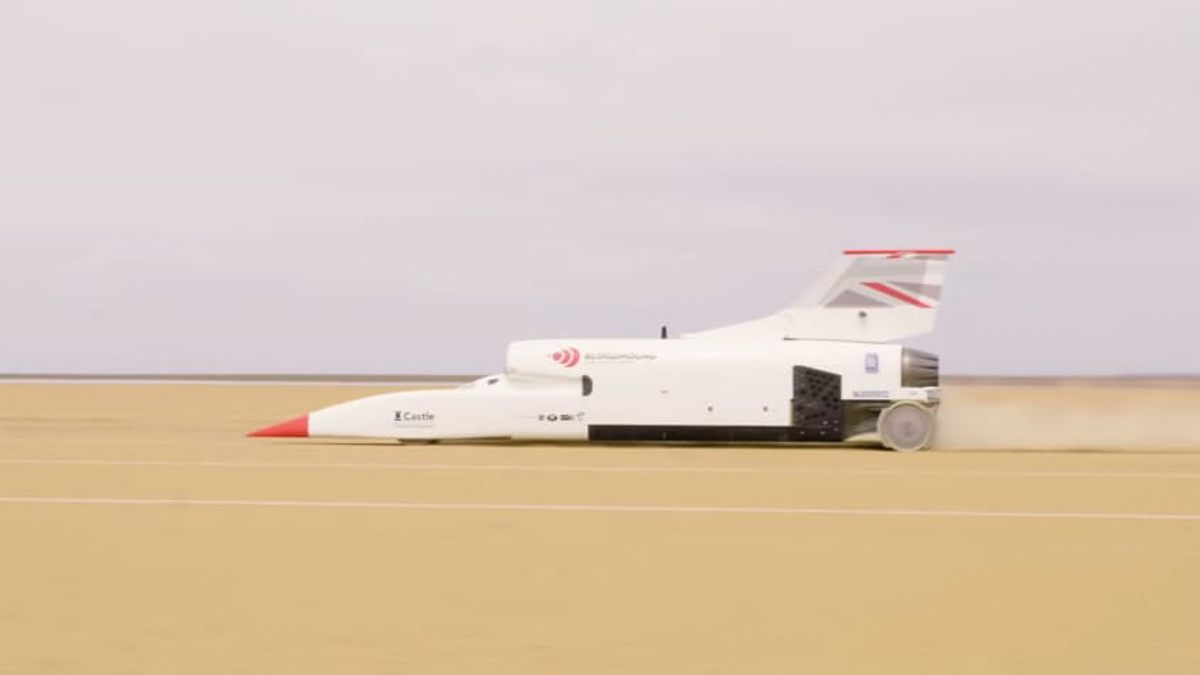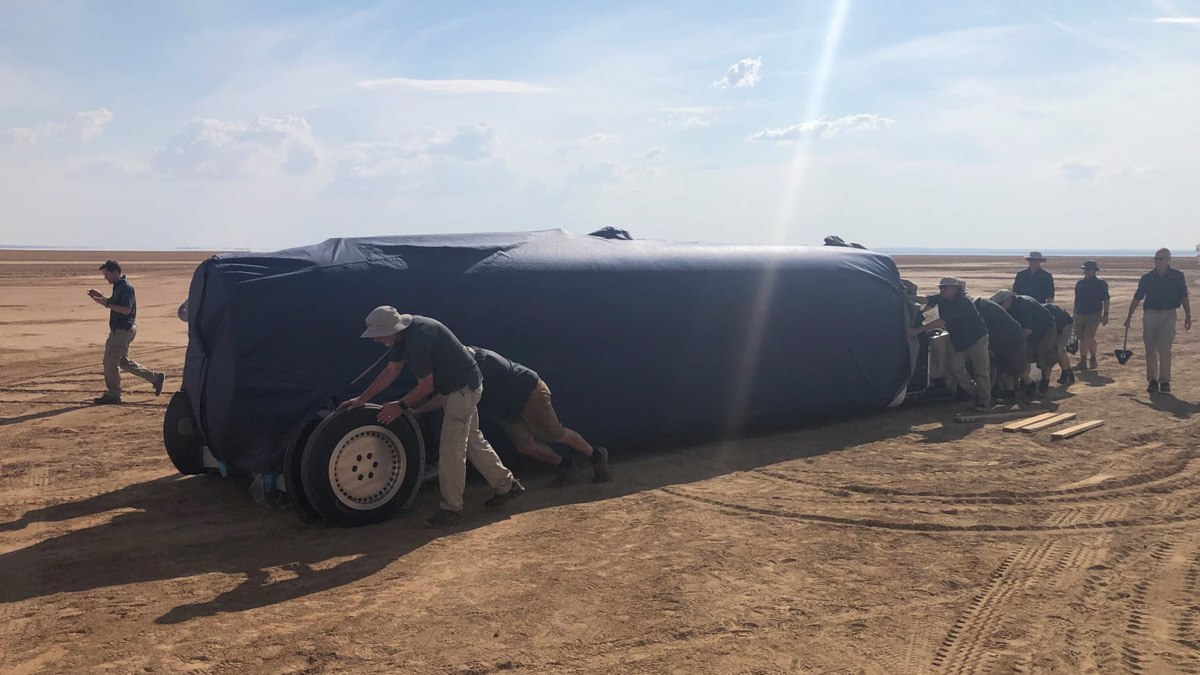The Bloodhound LSR has finally touched down on South African sand, and testing is well underway
One could say that the Bloodhound project has had its fair share of ups and downs, almost coming to a complete close late last year when funds ran dry. Despite initial fears, over a decade of work was saved by British entrepreneur Ian Warhurst, acquiring the project for an undisclosed sum in efforts to keep the 1609kph dream alive. Last month, it touched down in South Africa, and test result are looking promising.
The aim for the test runs were to take the Bloodhound to 800kph+, taking data from hundreds of sensors to analyse performance and stability, whilst also assessing its ability to slow down – AP Racing wheel brakes, drag parachutes and its air brakes all put to the test ahead of the record attempt in 12-18 months’ time.
The latest test run broke that target speed, with all 54,000bhp pushing the LSR to a peak speed of 806kph. As you’d expect from such a groundbreaking piece of engineering, testing has surfaced a few niggles, but the first deployment of its modified brake chute, used to bring the machine to sane speeds, worked as expected.
Bloodhound LSR engineering director, Mark Chapman, said: ‘Newquay was all about getting up to speed and finding out how quickly we could get the engine to full power and accelerate using max reheat. Andy [Green] was on the throttle for two seconds to reach 322kph in eight seconds. Here at the Hakskeenpan on a 16km track we can accelerate for much longer, achieve higher speeds and investigate the car’s stability, performance and drag, all crucial as we move towards setting a new world land speed record.’
Powering the machine is a Rolls-Royce EJ200 jet engine from a Eurofighter Typhoon, alongside an additional cluster of rockets to help it reach the magic 1609kph. Such a figure would eclipse the 1227.985kph record set by Thrust SSC by quite some margin, firing it across the desert at 447 metres per second – that’s enough to travel the length of a football field in 0.234sec, and the entire length of Wales (273 kilometres) in just 10 minutes.
Despite the cutting-edge tech, current plans have a 560bhp Jaguar V8 at the heart of LSR. Pumping fuel to the jet engine requires rather a lot of power, meaning such an engine is the natural, cheapest place to turn – hopes are to replace this with a more space-efficient electric motor and batteries, technology that didn’t exist when the project began a decade ago.
This article originally appeared at evo.co.uk
Copyright © evo UK, Dennis Publishing



